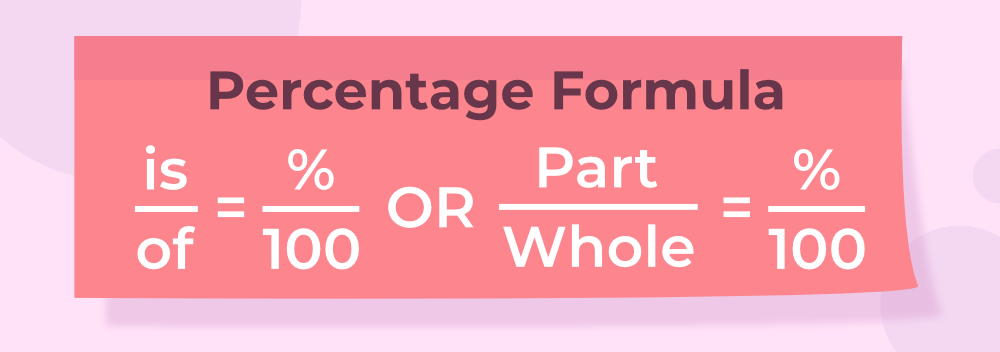
|
In this article, we will learn about, the definition of percentages, the application of percentages, and others in detail. PercentagePercentage is denoted by the symbol %, which means “per hundred.” It represents a fraction of a whole, where the whole is considered to be 100. For example, 50% means 50 parts out of 100, which is equivalent to the fraction 1/2. Percentage formula is added in the image added below:
Applications of PercentagePercentage has numerous applications in daily life, including: In Finance and AccountingPercentages are extensively used in finance and accounting for various purposes, such as calculating interest rates, profit margins, returns on investment, depreciation, taxes, and financial ratios. In Sales and MarketingPercentages are used in sales and marketing to calculate discounts, markups, sales growth rates, market shares, conversion rates, and other performance metrics. In EconomicsPercentages are used in economics to measure changes in prices, inflation rates, unemployment rates, GDP growth rates, interest rates, and other economic indicators. In StatisticsPercentages are used in statistics to represent proportions, frequencies, probabilities, margins of error, confidence intervals, and other statistical measures. In EducationPercentages are used in education to grade assignments, exams, and assessments, as well as to calculate graduation rates, attendance rates, and other educational metrics. In HealthcarePercentages are used in healthcare to calculate medical test results, mortality rates, disease prevalence, treatment success rates, and other healthcare statistics. Real-Life Applications of PercentageSome specific examples of how percentage is used in daily life are:
Now let’s learn about the same in detail. Calculating InterestIf you borrow $1000 at an interest rate of 5% per year, you will pay $50 in interest over the first year. This can be calculated as 5% × $1000 = $50. Thus, the use of percentage is used in calculating interest. Getting a DiscountIf a store offers a 20% discount on a $50 item, you will save $10. This can be calculated as 20% × $50 = $10. Thus, concept of percentage is used in calculating discount. Calculating Sales TaxWhen you purchase an item, you may be charged a sales tax, which is a percentage of the purchase price. For example, if the sales tax rate is 8%, and you purchase an item for $100, you will pay $8 in sales tax. Grading AssignmentsA teacher may grade an assignment out of 100 points. If a student earns 85 points, their grade can be expressed as 85%. ConclusionPercentage is a versatile mathematical concept that has numerous applications in daily life. Understanding the concept of percentage allows us to make informed decisions, solve problems, and navigate various situations effectively. By mastering the use of percentage, we can gain a deeper understanding of the world around us and make the most of our everyday experiences. FAQs on PercentageWhat are uses of percentages?
What is real life application of percentage change?
How to convert a fraction to a percentage?
How to convert a percentage to a decimal?
What is difference between percentage and ratio?
How to calculate percentage change?
What is use of percentage in probability?
|
Reffered: https://www.geeksforgeeks.org
| Mathematics |
| Related |
|---|
| |
| |
| |
| |
| |
Type: | Geek |
Category: | Coding |
Sub Category: | Tutorial |
Uploaded by: | Admin |
Views: | 14 |